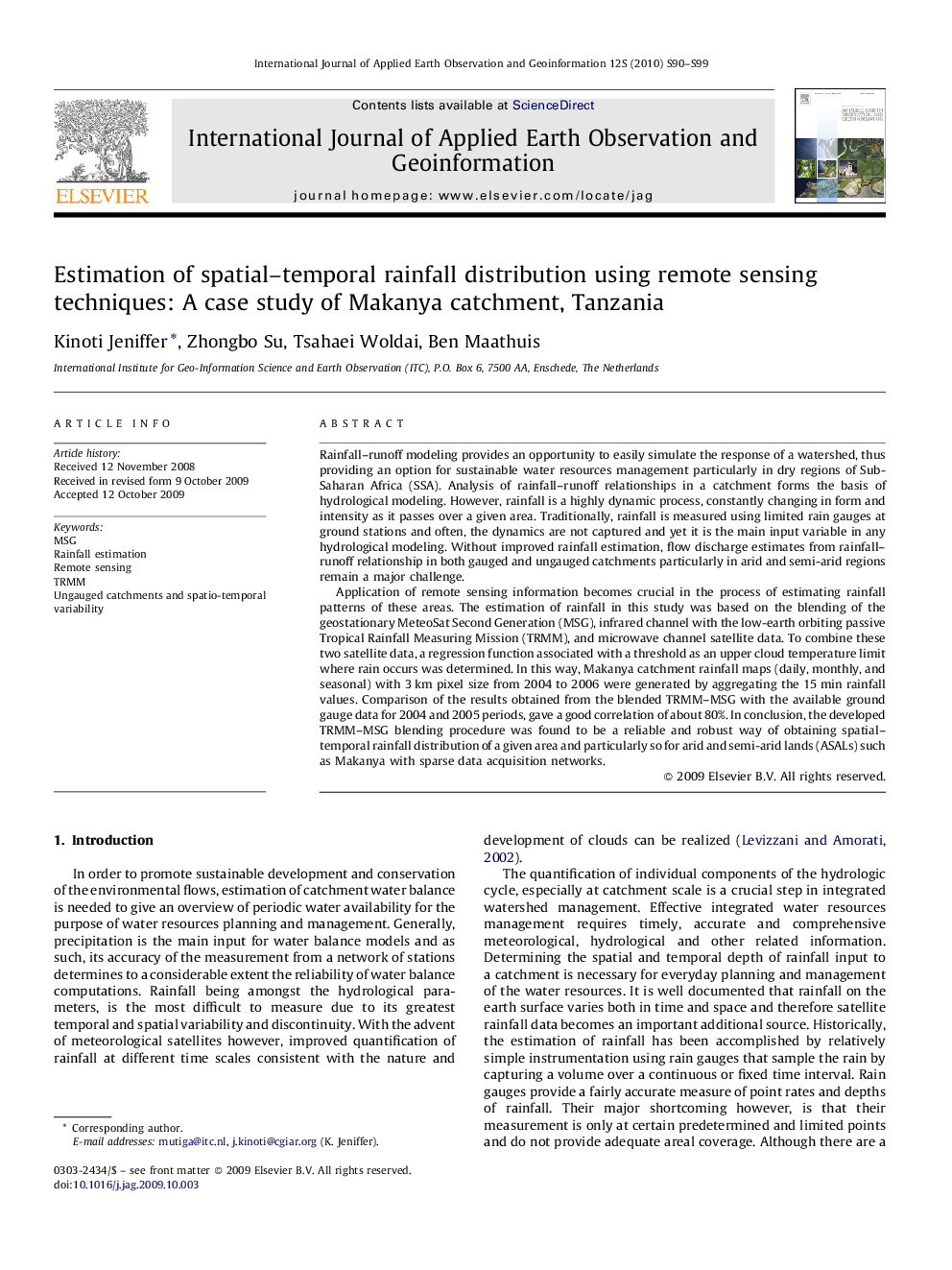| Article ID | Journal | Published Year | Pages | File Type |
|---|---|---|---|---|
| 4465346 | International Journal of Applied Earth Observation and Geoinformation | 2010 | 10 Pages |
Rainfall–runoff modeling provides an opportunity to easily simulate the response of a watershed, thus providing an option for sustainable water resources management particularly in dry regions of Sub-Saharan Africa (SSA). Analysis of rainfall–runoff relationships in a catchment forms the basis of hydrological modeling. However, rainfall is a highly dynamic process, constantly changing in form and intensity as it passes over a given area. Traditionally, rainfall is measured using limited rain gauges at ground stations and often, the dynamics are not captured and yet it is the main input variable in any hydrological modeling. Without improved rainfall estimation, flow discharge estimates from rainfall–runoff relationship in both gauged and ungauged catchments particularly in arid and semi-arid regions remain a major challenge.Application of remote sensing information becomes crucial in the process of estimating rainfall patterns of these areas. The estimation of rainfall in this study was based on the blending of the geostationary MeteoSat Second Generation (MSG), infrared channel with the low-earth orbiting passive Tropical Rainfall Measuring Mission (TRMM), and microwave channel satellite data. To combine these two satellite data, a regression function associated with a threshold as an upper cloud temperature limit where rain occurs was determined. In this way, Makanya catchment rainfall maps (daily, monthly, and seasonal) with 3 km pixel size from 2004 to 2006 were generated by aggregating the 15 min rainfall values. Comparison of the results obtained from the blended TRMM–MSG with the available ground gauge data for 2004 and 2005 periods, gave a good correlation of about 80%. In conclusion, the developed TRMM–MSG blending procedure was found to be a reliable and robust way of obtaining spatial–temporal rainfall distribution of a given area and particularly so for arid and semi-arid lands (ASALs) such as Makanya with sparse data acquisition networks.
